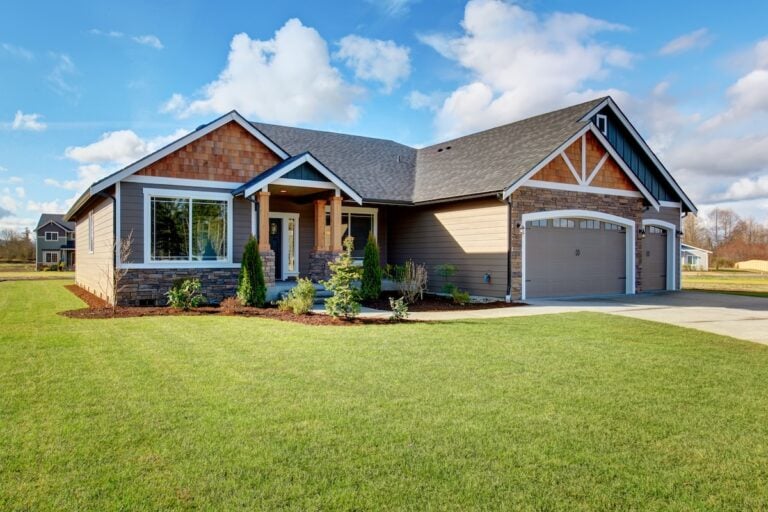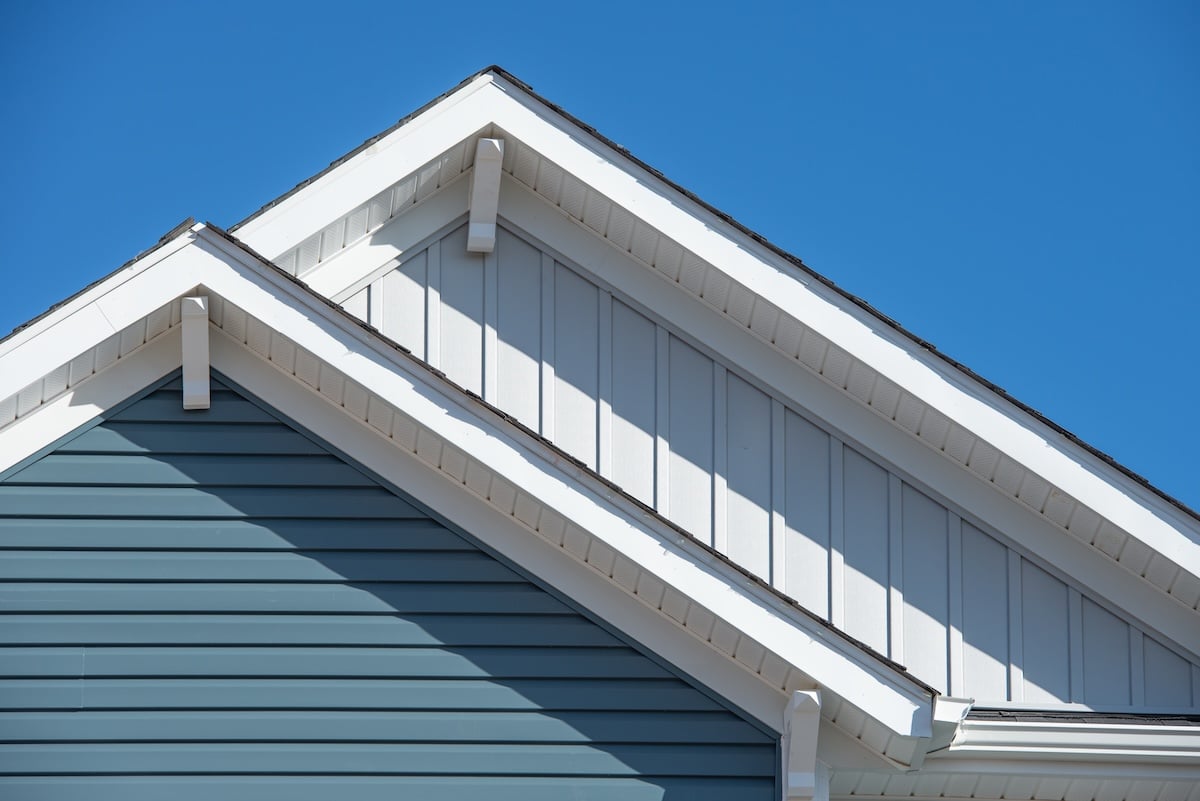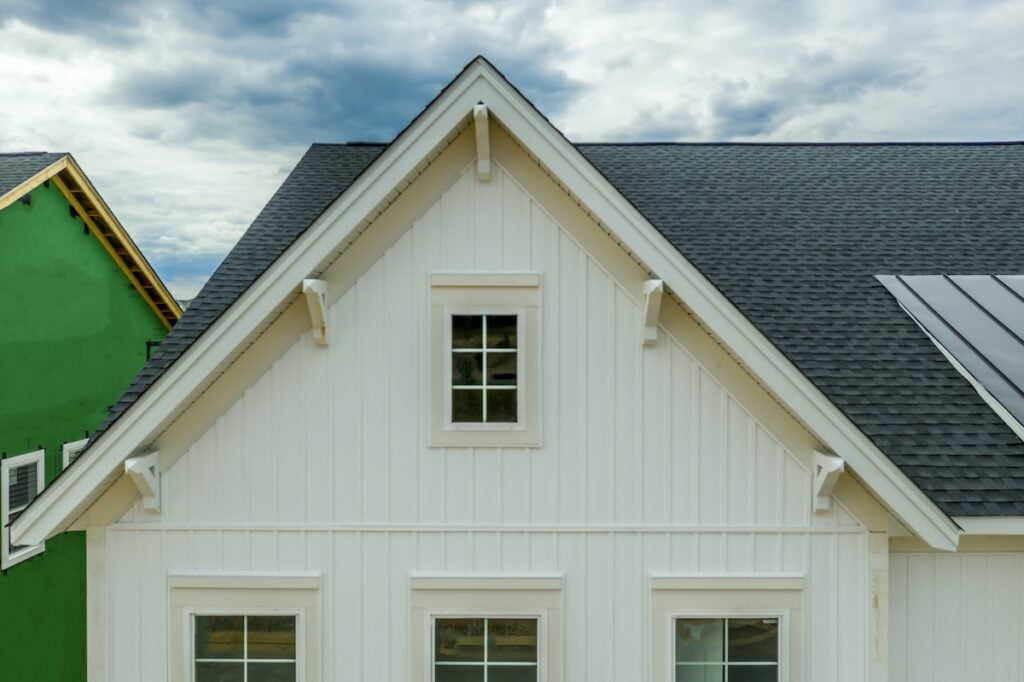
6 Min Read

When it comes to home exteriors, few options match the timeless appeal and versatility of board and batten siding. From rustic farmhouses to modern homes, this siding style has seen a resurgence in popularity. But what exactly is board and batten siding, and why are so many homeowners choosing it?
This guide will walk you through everything you need to know, including:

Board and batten siding is a style of exterior cladding that alternates wide boards with narrower strips, or “battens,” which cover the seams between the boards. This creates a distinct, textured pattern that exudes character. Traditionally used in barns and rustic structures, it has evolved into a stylish option for contemporary and classic homes alike.
Available in a variety of materials such as wood, vinyl, and fiber cement, board and batten siding can suit a range of budgets and aesthetics. Its flexibility, alongside its visual appeal, is a key reason homeowners choose this style.
There’s more to board and batten siding than its good looks. Here’s why this siding option might be worth your attention:

To determine whether board and batten is right for your home, it’s helpful to understand how it compares to other siding options:
Board and batten siding offers a unique, textured look that creates depth and character for any home. Unlike flat-paneled or horizontal siding, the vertical lines of board and batten draw the eye upward, making homes appear taller and more dramatic. This classic aesthetic has roots in traditional architecture but has evolved to suit modern and contemporary designs as well, making it versatile for all kinds of homes. Whether you’re looking to enhance curb appeal or make a bold visual statement, board and batten is a standout choice.
Installing board and batten siding requires more time and effort compared to traditional horizontal siding. Traditional siding usually involves single, large panels that are easier to attach. In contrast, board and batten siding uses alternating wide boards and narrow battens, which need to be carefully measured, aligned, and secured. Each piece must be installed individually to achieve the characteristic layered look, making the process more labor-intensive. While this might take longer and require skilled craftsmanship, the finished result is typically worth the effort due to its striking and durable finish.
The unique layered design of board and batten siding provides more than just visual appeal—it also adds an extra layer of insulation. The arrangement of boards and battens creates pockets of air between the materials, which can improve thermal resistance and help regulate indoor temperatures. This makes board and batten a practical choice for homeowners looking to enhance energy efficiency. Additionally, when paired with high-quality siding and roof insulation, it can significantly reduce heating and cooling costs, making it a functional option for homes in various climates.
The maintenance of board and batten siding largely depends on the material used. Wood, for example, may require regular sealing, painting, or staining to prevent damage from moisture, pests, or UV rays. However, modern materials like vinyl or fiber cement offer a low-maintenance alternative, requiring far less upkeep while maintaining the same appealing look. These materials are resistant to weathering, cracking, and fading, making them an excellent choice for busy homeowners. Whether you choose traditional wood or a more modern option, board and batten siding can be maintained relatively easily with occasional cleaning and inspections.
When it comes to cost, board and batten siding tends to be slightly more expensive than standard horizontal siding. This is due to the additional materials needed for its layered design and the increased labor required for proper siding installation. However, many homeowners see it as a worthwhile investment thanks to its durability, timeless aesthetic, and potential to boost property value. While the upfront cost may be higher, the long-term benefits—such as improved insulation, reduced energy costs, and enhanced curb appeal—can make board and batten an economical choice over time. For those looking for a balance of beauty and functionality, it’s a cost that often pays off.

The choice of material significantly impacts your siding’s longevity, performance, and overall look. Below is a breakdown of the most popular materials:
Wood provides a timeless, natural charm that’s difficult to replicate with other materials. Cedar, pine, and redwood are popular choices for their durability and aesthetic appeal. Wood siding is often chosen for its eco-friendly qualities and its ability to blend seamlessly with natural surroundings. However, maintaining wood requires effort, as it needs regular sealing or staining to protect it from the elements and to preserve its durability over time. Without this upkeep, wood can be prone to rotting, warping, or pest infestations.
Vinyl is a versatile, cost-effective siding option that requires minimal maintenance, making it a practical choice for homeowners in a variety of climates. It is lightweight and available in a wide range of colors to suit different design preferences. Additionally, vinyl siding is resistant to moisture and does not require painting or sealing. However, it does have its drawbacks. Vinyl can be susceptible to cracking or warping under extreme temperatures, whether in intense heat or freezing conditions. While durable in normal climates, it may not perform as well in more severe weather environments.
Fiber cement is a premium siding material that combines durability with aesthetic appeal. It is designed to mimic the look of wood, offering a similar warmth and texture while being far more resistant to the elements. This material is highly durable and can withstand moisture, pests, and even fire, making it an excellent choice for long-term use. However, the benefits of fiber cement come with a higher initial cost compared to other options like vinyl or engineered wood. Despite the added expense, it is a worthwhile investment for those seeking a high-performance, low-maintenance siding material that offers both beauty and resilience.
Engineered wood is an innovative material that offers the same warmth and appearance of traditional wood but with reduced maintenance requirements. Made by binding wood fibers and resins, it is more resistant to issues like warping or splitting that often affect natural wood. This material is lightweight and easier to install, making it a cost-effective option for homeowners who want the classic wood look without the extensive upkeep. While engineered wood is less durable than fiber cement, it is still a reliable and attractive choice for siding, striking a balance between affordability and performance.
Metal siding, such as steel or aluminum, is a popular choice for modern and industrial-style homes. Its clean, sleek appearance makes it a standout option for contemporary designs. Metal is highly durable, resistant to fire, and recyclable, making it an eco-conscious choice as well. Additionally, it requires little ongoing maintenance and can withstand various weather conditions. However, metal siding is not without its downsides. It can be prone to dents or scratches, particularly in areas with heavy impacts or hail. Despite this, its longevity and minimal upkeep make metal a reliable and stylish option for many homeowners.
In conclusion, board and batten siding is the perfect choice for homeowners seeking a mix of timeless style, enhanced curb appeal, and long-lasting durability. At Kingfisher Roofing, we bring over 20 years of expertise to every project, ensuring top-quality craftsmanship and personalized service. From selecting the ideal materials to delivering seamless installation, we are a team of dedicated contractors that will make your vision a reality.
When it comes to protecting and transforming your home’s exterior, you can count on Kingfisher Roofing to get the job done right. Contact us today for a free consultation and take the first step toward upgrading your home with board and batten siding!